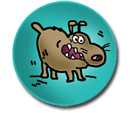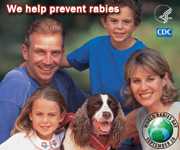Horse Stabled at Tennessee Walking Horse 2006 National Celebration Tested Positive for Rabies
Posted: September 9, 2006

The Tennessee Department of Health (TDH) with the assistance of the Centers for Disease Control and Prevention (CDC) are notifying the approximately 150,000 persons who attended the Tennessee Walking Horse National Celebration in Shelbyville of a confirmed case of rabies in a horse stabled on the grounds during the event. If persons were bitten or came in contact with saliva from this horse (described below) from August 23-31, 2006 while attending the Celebration, they may have been exposed to rabies and are invited to contact TDH for an assessment.
Rabies is a viral infection that nearly always results in fatal encephalitis. Humans may be exposed to rabies primarily through the bite of a rabid animal or when the virus is introduced into fresh open cuts in the skin or onto mucous membranes such as the eyes, mouth or nose from the saliva of a rabid animal. Attending an event where a rabid animal was present, petting a rabid animal or contact with the blood, urine or feces of a rabid animal does not constitute a risk for transmission. If a person is exposed to rabies, a series of shots (post-exposure prophylaxis) is highly effective in preventing the disease.
Among the approximate 150,000 persons who attended the Tennessee Walking Horse National Celebration, the number and origin (U.S. states or other countries) of persons who may have been exposed to this horse are unknown. TDH is currently working with event organizers and managers to identify additional mechanisms to contact participants and visitors.
The horse that developed rabies was from Waynesville, Missouri. It was a 3-year-old gelding (neutered male horse), buckskin (cream to tan) in color with a black mane and tail. “Buck” or “Bucky” was described as “small,” 14 hands or 56 inches tall at the withers (i.e., the highest area of the shoulders at the base of the neck). He was stabled on the north side of Barn 50 in stall #12, the third from the west end. A bright blue curtain labeled “4J Land and Cattle Company” covered the outside porch of the barn. The potential for contact by the public was very limited when the horse was in its stall but there may have been opportunity for public contact when the horse was taken for rides on the Celebration grounds. The horse was first noted to be ill on August 28. Over the next few days, the horse developed severe neurological signs and, as a result, was euthanized. Persons directly involved in the care of the horse are being assessed for possible rabies exposure and the need for rabies post-exposure treatment.
If the individual:
- was bitten by a horse;
- had contamination of a fresh open wound with saliva from a horse; or
- had saliva from a horse come in contact with eyes, nose, mouth or other mucous membranes.
Personnel are available to answer additional questions at the Tennessee Department of Health Public Information Line 1-866-355-6129.
- Page last reviewed: April 22, 2011
- Page last updated: April 22, 2011
- Content source:





 ShareCompartir
ShareCompartir